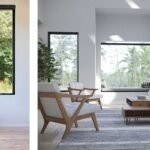How Architecture Affects Our Mood and Behavior
Architecture profoundly influences our mood and behavior, shaping our daily experiences and well-being. The design, layout, and aesthetic of buildings and spaces impact how we feel and act within them. Understanding this relationship allows architects to create environments that enhance mental health, productivity, and overall quality of life.
The Power of Natural Light
Natural light plays a crucial role in regulating our mood and behavior. Exposure to sunlight boosts serotonin levels, improving mood and reducing stress. Architectural designs that maximize natural light through large windows, skylights, and open spaces help create uplifting and energizing environments. Natural light also improves sleep quality by regulating our circadian rhythms, further enhancing overall well-being.
Color Psychology in Design
Colors have a significant impact on our emotions and behavior. Warm colors like red and yellow evoke energy and excitement, while cool colors like blue and green promote calmness and relaxation. Architects use color psychology to design spaces that elicit desired emotional responses. For example, using soothing colors in healthcare settings can reduce anxiety, while vibrant colors in learning environments can stimulate creativity and engagement.
Spatial Layout and Flow
The layout and flow of a space influence how we move and interact within it. Open, uncluttered spaces with clear pathways promote ease of movement and reduce feelings of confinement and stress. Conversely, cramped and cluttered spaces can lead to frustration and anxiety. Thoughtful spatial design encourages positive interactions and enhances functionality, contributing to a more pleasant and productive environment.
Biophilic Design Elements
Biophilic design incorporates natural elements into built environments, fostering a connection to nature. Features like indoor plants, natural materials, and views of green spaces enhance our mood and well-being. Studies have shown that biophilic design reduces stress, boosts cognitive function, and promotes healing. Incorporating these elements into architecture creates spaces that nurture our mental and physical health.
Acoustic Comfort and Soundscapes
Sound greatly affects our mood and behavior. Noisy environments can increase stress and reduce concentration, while quiet spaces enhance relaxation and productivity. Architectural design can mitigate noise through soundproofing materials, acoustic panels, and strategic layout planning. Creating pleasant soundscapes with natural sounds or calming music further enhances the ambiance of a space, positively impacting our mood.

The Role of Texture and Materials
Textures and materials contribute to the sensory experience of a space. Soft, tactile materials like plush fabrics and natural wood create a sense of comfort and warmth. In contrast, hard, cold materials like metal and concrete can evoke feelings of sterility and detachment. Architects use a variety of textures and materials to craft environments that feel inviting and harmonious, influencing our emotional responses.
Lighting Design and Mood
Beyond natural light, artificial lighting design also affects our mood and behavior. Warm, ambient lighting creates a cozy, relaxed atmosphere, while bright, focused lighting enhances alertness and productivity. Adjustable lighting systems that mimic natural light cycles can improve mood and well-being by aligning with our biological rhythms. Thoughtful lighting design enhances the functionality and emotional impact of spaces.
The Importance of Views and Vistas
Views and vistas in architectural design provide visual relief and connection to the outside world. Access to views of nature, urban landscapes, or other interesting scenes can reduce stress and improve mood. Large windows, balconies, and strategically placed openings enhance these visual connections, creating a sense of openness and tranquility within a space.
Social Spaces and Community Building
Architecture that fosters social interaction and community building positively impacts our mood and behavior. Communal areas like lounges, courtyards, and shared workspaces encourage socialization and collaboration. These spaces promote a sense of belonging and support, enhancing our emotional well-being. Designing environments that facilitate social connections strengthens communities and improves overall quality of life.
Conclusion
Architecture profoundly affects our mood and behavior through various design elements such as natural light, color, spatial layout, biophilic design, acoustics, texture, lighting, views, and social spaces. By understanding and leveraging these influences, architects can create environments that enhance mental health, productivity, and overall well-being. Thoughtful architectural design contributes to a more positive and fulfilling human experience.



